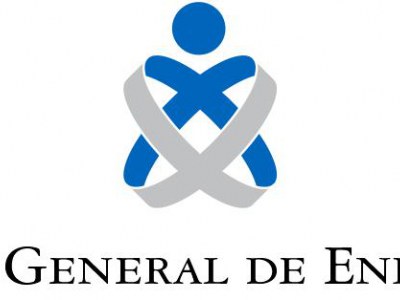11 Key HR Metrics
11 Key HR Metrics

In our previous blog on HR Metrics, we wrote about 14 HR metrics related to recruitment and revenue. We will expand on this below by focusing on 11 key metrics for HR, related to retention, absenteeism and learning & development.
Want to know more about how you can use data to drive data-driven decision-making that benefits both the organization and its people? Check out our People Analytics Certificate Program to expand your skill set with in-demand HR skills!
Key HR metrics on Absenteeism
Previously, we addressed the enormous costs involved in employee absenteeism. As we mentioned in that article, the first step towards analyzing absenteeism is tracking it. Here are some key HR metrics that are helpful in this process.
1. Absence rate
Unscheduled absence rate (Absence days/FTE) is a key HR metrics to measure absenteeism. It tracks the percentage of workers who are absent during a given period. This metric also provides a benchmark over time: absence levels can differ from month to month, but over longer periods of time you want the rates to be relatively low and stable. Growing absence rates could indicate a worsening work climate, increased stress in the workplace, or a flu epidemic. An absence rate of about 1 to 2% is normal (because almost everybody is ill a few days per year).
2. Absence rate per manager
By dividing the number of absence days in a team or department by the total FTE (full-time equivalent) in this team or department, HR can easily identify problem areas within the company. When certain divisions or managers structurally struggle with high absence levels, they may be doing something wrong and their performance is likely to suffer. By enabling HR to intervene before problems get out of hand, this metric can serve a diagnostic and preventive purpose.
Related (free) resource ahead! Continue reading below ↓
People Analytics Resource Library
Download our list of key HR Analytics resources (90+) that will help you improve your expertise and initiatives. Your one-stop-shop for People Analytics!
3. Overtime expense
People don’t mind working overtime every now and again. However, when overtime goes through the roof, you can expect your absence rates to follow. Excessive overtime, especially for longer periods of time (e.g. audit season for accountancy firms), also drives turnover. Consistently high levels of overtime can be fixed relatively easy by hiring additional employees.
4. Employee Productivity Index
Traditionally, employees work from 9 to 5, yet more and more people are working from home. Companies are increasingly letting the traditional mentality go. This means that performance can no longer be measured by looking at who shows up.
Nowadays, it doesn’t really matter how many hours you worked in a day. What matters is what you actually achieved. A productivity index tracks this. Nonetheless, it does provide the challenge of how productivity is defined. This will differ between organizations and functions and requires careful consideration. We’ve written a full review of the 21 most important performance metrics you should know.
Key HR metrics on Learning and Development
Learning and development is becoming increasingly important. A lack of development opportunities is the #1 reason young talent leaves your company. As such, effective training will lead to a more productive workforce. This is why training effectiveness is a key HR metric.
5. Training expenses per employee
A common metric is training expenses per employee. This metric is helpful in tracking development costs. It also helps HR to make smarter investments in developing personnel. HR is coming around to the fact that day-long training courses are both expensive and inadequate in providing the continuous learning experience sought by employees. Investing the available budget in continuous learning experiences will lead to a much more effective training program for employees.
6. Training effectiveness index
To measure the effectiveness of training, you need to measure what people learned. This is tricky. You cannot just measure an employee’s performance before and after a training. This is because people generally apply for training when they feel they are underperforming. People who perform below their average for one month are more likely to return to their average performance the next month. This phenomenon is called ‘regression to the mean’. This would give an unbalanced view of training effectiveness.
When testing for training effectiveness, it is better to set training goals and check whether employees have reached those goals when the training is over. Companies can also track baseline productivity and look into the impact of training over a longer period of time. Effective training is expected to help the employee become better in his/her job and thus raises his/her average performance level. In other words: after effective training, you would expect the Employee Productivity Index to increase.
7. Training efficiency
Training effectiveness is important. However, measuring the efficiency of training will help you make the most of your money.

Another metric to keep track off is how satisfied employees are with development opportunity. A lack of development opportunities is a key predictor of employee turnover. Training is often used to reward employees and create commitment to the organization. When people are unhappy with the company’s new and ‘amazing’ Learning Management System, they won’t use it – and thus won’t learn. In addition, people will only learn when they are interested in what they are learning about (a.k.a. happy in their job). This makes development opportunity satisfaction a fascinating (bonus) metric — and integrates this metric seamlessly with our next topic.
Key HR metrics on Retention
Since the ‘war for talent’ has started, companies have been increasingly concerned about retaining their employees. That’s why HR should stay on top of the most important retention metrics.
8. Employee happiness
Employee happiness (also measured as employee satisfaction) is more often recognized as a valuable HR metric. Happy employees are productive employees, they are committed to the organization and don’t mind working overtime when necessary. Employee happiness is related to commitment to the organization, and commitment to the job. Low employee happiness in certain parts of the organization can be an indicator of conflict or work stress.
9. Voluntary turnover rate
We already mentioned turnover when we talked about learning and development. For a lot of companies, voluntary turnover is a key HR metric. Turnover is final; most people never come back. People often quit their managers, not their jobs. With that in mind, turnover is another metric that will help you identify potential problem areas within the organization.
10. Talent turnover rate
Now, not all turnover is bad. Preferably, the people who do not fit within the company leave. This is good turnover, but when your key talent leaves, turnover becomes a big problem. This is why you should track the turnover of both your high potentials and your low potentials. Turnover of your high potentials should be low. An important cause for high turnover amongst high potentials is a lack of career opportunity within the company.
11. Retention rate per manager
We love our manager metrics. Some managers do an amazing job engaging and connecting with their employees. Still, we all know managers who are not so good at it. Retention rates per manager or division is a metric that helps you identify ineffective managers. Once you have identified these managers, you can provide them with additional support and train them to become more effective managers.
Of course, retention rates will differ between people with different jobs. However, when similar teams in similar geographical locations show very different retention rates it indicates that there is something rotten in the state of Denmark.








